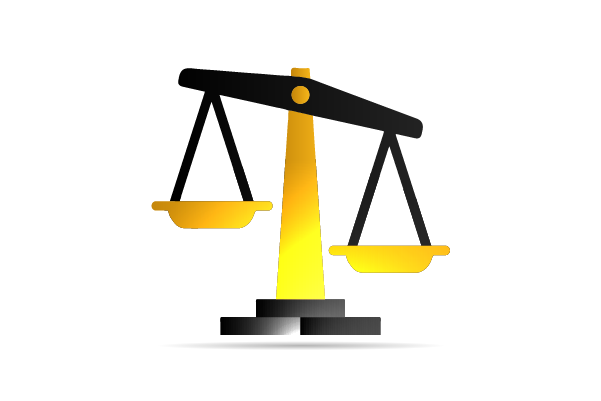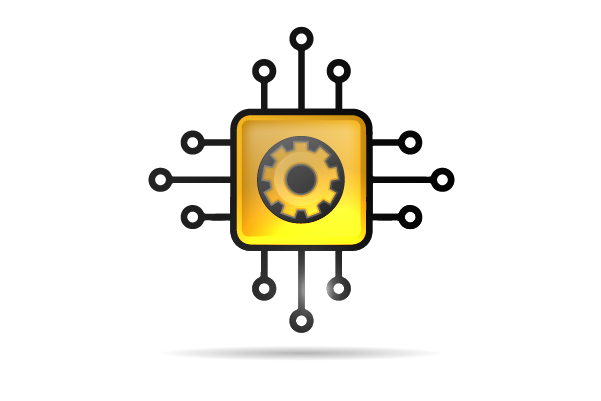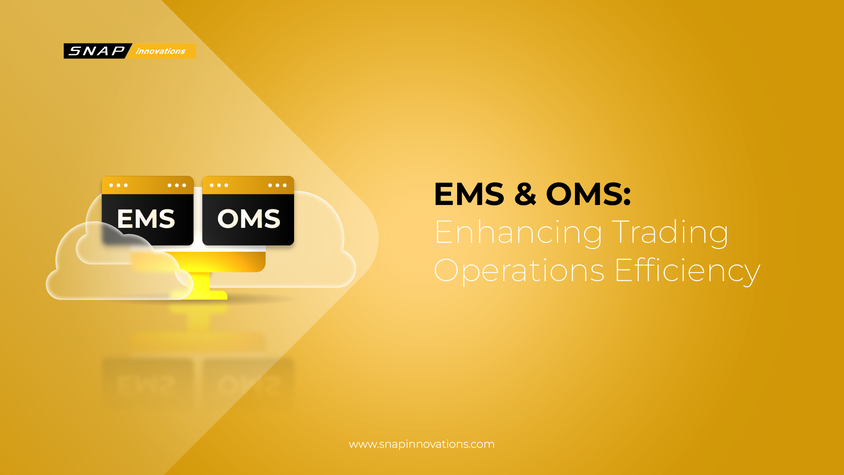In the fast-paced world of financial markets, efficiency is key. That’s where EMS and OMS come into play. These systems, commonly referred to as EMS & OMS, play a crucial role in streamlining trading operations, from order generation to execution.
In this comprehensive guide, we’ll delve into the intricacies of EMS & OMS, exploring their functionalities, benefits, and the pivotal role they play in modern trading environments.
What is EMS & OMS?

EMS (Execution Management Systems) and OMS (Order Management Systems) are the backbone of modern trading operations, revolutionizing how financial institutions manage their transactions. These sophisticated software platforms are indispensable tools that empower traders with advanced functionalities to navigate the complexities of today’s markets seamlessly. An EMS facilitates the execution process by providing traders with a comprehensive suite of tools to execute trades swiftly and efficiently across various asset classes and trading venues. From algorithmic trading capabilities to smart order routing algorithms, EMS platforms offer unparalleled speed and precision in executing trades, enabling traders to capitalize on market opportunities with confidence.
On the other hand, an OMS serves as the central hub for managing orders throughout their lifecycle. It handles order creation, routing, and monitoring, ensuring that trades are executed accurately and in compliance with regulatory requirements. OMS platforms provide traders with real-time visibility into their order flow, allowing them to track the status of orders and manage risk effectively. By automating order management tasks and providing a consolidated view of trading activities, OMS platforms streamline the trading process, enabling firms to operate more efficiently and profitably in today’s dynamic markets.
Together, EMS and OMS systems form a powerful ecosystem that enables traders to execute trades with speed, accuracy, and efficiency. By seamlessly integrating execution and order management functionalities, these platforms empower traders to make informed decisions, execute trades with precision, and manage risk effectively in the ever-changing landscape of financial markets. In an industry where milliseconds can make a significant difference, EMS and OMS platforms play a crucial role in driving trading performance and maintaining a competitive edge.
Benefits of EMS & OMS Integration
 In today’s rapidly evolving financial landscape, the integration of Execution Management Systems (EMS) and Order Management Systems (OMS) has emerged as a cornerstone of modern trading operations. This seamless integration streamlines the entire trading process, from order creation to execution and post-trade management, offering a plethora of benefits to market participants. Let’s delve deeper into the advantages of EMS and OMS integration, exploring how this transformative technology is revolutionizing the way traders operate in the dynamic world of finance.
In today’s rapidly evolving financial landscape, the integration of Execution Management Systems (EMS) and Order Management Systems (OMS) has emerged as a cornerstone of modern trading operations. This seamless integration streamlines the entire trading process, from order creation to execution and post-trade management, offering a plethora of benefits to market participants. Let’s delve deeper into the advantages of EMS and OMS integration, exploring how this transformative technology is revolutionizing the way traders operate in the dynamic world of finance.
1. Enhanced Efficiency
The integration of EMS and OMS is a game-changer in the world of trading, offering a plethora of benefits that significantly enhance operational efficiency. By bringing together the functionalities of both systems into a unified platform, traders can bid farewell to the cumbersome task of navigating through multiple interfaces.
Instead, they gain access to a streamlined workflow that automates various processes, reducing manual interventions and minimizing the potential for errors. This efficiency boost translates into tangible time savings, allowing traders to focus their efforts on strategic decision-making rather than getting bogged down by administrative tasks.
2. Improved Order Execution
One of the most compelling advantages of EMS and OMS integration lies in its ability to revolutionize order execution. With a seamless connection between the order creation capabilities of EMS and the order management functionalities of OMS, traders can execute trades with unprecedented speed and accuracy.
Leveraging sophisticated execution algorithms and smart order routing strategies, they can navigate complex market conditions with confidence, optimizing trade execution and minimizing slippage. The result? Enhanced trading performance, improved execution quality, and ultimately, better outcomes for investors.
Also Read: What is Compound Interest? A Comprehensive Guide
3. Comprehensive Order Management
Integration empowers traders with a comprehensive view of their order flow and trading activities, transforming the way they manage their portfolios. By consolidating order-related data from disparate sources into a single interface, traders gain real-time visibility into order status, fills, and executions.
This holistic perspective enables them to monitor their trading activities more effectively, identify potential bottlenecks or inefficiencies, and take proactive measures to address them. Moreover, the ability to access historical order data and generate customizable reports facilitates deeper insights into trading performance, empowering traders to refine their strategies and drive better outcomes.
4. Seamless Workflow Integration
In today’s fast-paced trading environment, seamless communication and collaboration are paramount to success. EMS and OMS integration facilitates the flow of information across different departments within an organization, breaking down silos and fostering a culture of collaboration.
From front-office traders to middle-office compliance teams and back-office operations staff, everyone benefits from a unified platform that streamlines communication and automates routine tasks. By eliminating manual handoffs and reducing latency in decision-making, firms can achieve greater operational efficiency and responsiveness to market opportunities.
5. Enhanced Compliance and Risk Management
The integration of EMS and OMS strengthens firms’ compliance and risk management capabilities, helping them navigate the increasingly complex regulatory landscape with confidence. With built-in compliance checks and real-time monitoring capabilities, traders can ensure adherence to regulatory requirements and internal trading policies.
By setting customizable trading limits and receiving alerts for potential compliance breaches, firms can mitigate operational and regulatory risks effectively, safeguarding their reputation and avoiding costly penalties. Moreover, the ability to generate audit trails and regulatory reports simplifies the compliance process, enabling firms to demonstrate transparency and accountability to regulators and stakeholders.
6. Scalability and Flexibility
A key advantage of EMS and OMS integration is its scalability and flexibility, allowing firms to adapt to evolving business needs and market dynamics. Whether expanding into new asset classes, entering new markets, or scaling operations to meet growing demand, firms can rely on their integrated trading platform to provide the necessary support.
By configuring EMS and OMS systems to accommodate diverse trading strategies and asset classes, firms can stay agile and responsive to changing market conditions, gaining a competitive edge in the dynamic landscape of financial markets.
7. Competitive Advantage
Ultimately, the integration of EMS and OMS systems gives firms a significant competitive advantage in the marketplace. By harnessing the power of automation, data analytics, and real-time connectivity, firms can differentiate themselves from competitors and deliver superior value to clients.
With faster order execution, better compliance controls, and enhanced operational efficiency, firms can attract new clients, retain existing ones, and ultimately drive business growth and profitability. In an industry where every millisecond counts, the ability to stay ahead of the curve can make all the difference, and EMS and OMS integration pave the way for success.
Key Features of EMS & OMS
EMS & OMS systems offer a plethora of features designed to meet the diverse needs of traders and investment firms. Some key features of EMS include:
1. Comprehensive Order Management
EMS & OMS platforms provide a comprehensive suite of order management tools and features, enabling traders to efficiently manage their orders across multiple asset classes and markets. These platforms allow traders to create, modify, and track orders in real-time, providing a centralized hub for order execution and management.
With advanced order management capabilities, traders can streamline their trading workflow, reduce manual errors, and ensure timely execution of trades, ultimately enhancing their overall trading efficiency and effectiveness.
2. Advanced Trading Analytics
One of the key advantages of EMS & OMS platforms is their advanced trading analytics capabilities. These platforms offer a wide range of analytical tools and features that allow traders to analyze market data, identify trading opportunities, and make informed decisions.
From sophisticated charting tools to customizable technical indicators, EMS & OMS platforms provide traders with the insights they need to navigate complex market dynamics and execute successful trades. By leveraging advanced trading analytics, traders can gain a deeper understanding of market trends, identify patterns, and develop profitable trading strategies.
3. Seamless Integration with Market Data Providers
EMS & OMS platforms seamlessly integrate with leading market data providers, ensuring that traders have access to real-time market data and news feeds directly within the platform. This integration allows traders to stay informed about market developments, track price movements, and monitor key indicators without having to switch between different applications or platforms.
By providing access to timely and accurate market data, EMS & OMS platforms empower traders to make informed decisions and react quickly to changing market conditions, ultimately improving their trading performance and profitability.
4. Customizable Trading Workflows
EMS & OMS platforms offer customizable trading workflows that allow traders to tailor the platform to their specific needs and preferences. Traders can customize their trading screens, set up alerts and notifications, and create personalized trading strategies to suit their individual trading style and objectives.
Whether they prefer a simple, streamlined interface or a more complex trading setup with multiple screens and advanced features, EMS & OMS platforms can accommodate a wide range of preferences, ensuring that traders have the tools they need to trade effectively and efficiently.
5. Risk Management Tools
Risk management is a critical aspect of trading, and EMS & OMS platforms provide a comprehensive suite of risk management tools and features to help traders manage their exposure and protect their capital.
These platforms offer pre-trade risk checks, position monitoring, and risk reporting capabilities, allowing traders to identify and mitigate potential risks in real-time. By monitoring key risk metrics and implementing risk controls, traders can minimize the impact of adverse market events and preserve their capital, ultimately improving their overall risk-adjusted returns.
6. Compliance and Regulatory Support
EMS & OMS platforms provide robust compliance and regulatory support, helping traders navigate the complex regulatory landscape and ensure compliance with relevant regulations and guidelines. These platforms offer features such as trade surveillance, audit trails, and regulatory reporting capabilities, allowing traders to demonstrate compliance with industry best practices and regulatory requirements.
By providing tools and features to support regulatory compliance, EMS & OMS platforms help traders minimize regulatory risk and ensure the integrity and transparency of their trading operations.
7. Scalability and Flexibility
Finally, EMS & OMS platforms are highly scalable and flexible, capable of supporting traders of all sizes and trading styles. Whether trading equities, fixed income, derivatives, or forex, these platforms can accommodate a wide range of trading strategies and volumes, allowing traders to scale their operations as their business grows and evolves.
With flexible deployment options and customizable features, EMS & OMS platforms provide traders with the flexibility they need to adapt to changing market conditions and capitalize on new opportunities, ultimately enabling them to achieve their trading goals and objectives.
Challenges and Considerations in EMS & OMS Implementation
 Implementing EMS & OMS systems can present various challenges and considerations for traders and financial institutions alike. Firstly, integrating these sophisticated platforms into existing infrastructure can be complex and time-consuming, requiring careful planning and coordination across multiple departments and stakeholders. Additionally, ensuring data integrity and accuracy is paramount, as any discrepancies or errors in trade data can have significant implications for trading decisions and compliance.
Implementing EMS & OMS systems can present various challenges and considerations for traders and financial institutions alike. Firstly, integrating these sophisticated platforms into existing infrastructure can be complex and time-consuming, requiring careful planning and coordination across multiple departments and stakeholders. Additionally, ensuring data integrity and accuracy is paramount, as any discrepancies or errors in trade data can have significant implications for trading decisions and compliance.
Furthermore, managing the costs associated with EMS & OMS implementation, including software licensing fees, infrastructure upgrades, and ongoing maintenance expenses, can pose financial challenges for organizations, particularly smaller firms with limited resources. Moreover, navigating regulatory requirements and compliance obligations adds another layer of complexity to the implementation process, as firms must ensure that their EMS & OMS platforms adhere to relevant regulations and industry standards.
Additionally, training staff and end-users to effectively utilize these platforms and maximize their potential can be a significant undertaking, requiring comprehensive training programs and ongoing support to ensure proficiency and adoption. Lastly, addressing cybersecurity risks and safeguarding sensitive data is paramount, as EMS & OMS platforms handle vast amounts of sensitive information and are prime targets for cyber attacks and data breaches. Overall, while EMS & OMS implementation offers numerous benefits, navigating these challenges and considerations is essential to ensure successful deployment and maximize the value of these powerful trading tools.
The Future of EMS & OMS
 The future of EMS & OMS is poised for exciting advancements and innovations that promise to reshape the landscape of trading operations. One key trend that is expected to drive the evolution of EMS & OMS is the increasing integration of artificial intelligence (AI) and machine learning (ML) technologies. These cutting-edge tools hold the potential to revolutionize trading operations by enabling more sophisticated analytics, predictive modeling, and decision-making capabilities.
The future of EMS & OMS is poised for exciting advancements and innovations that promise to reshape the landscape of trading operations. One key trend that is expected to drive the evolution of EMS & OMS is the increasing integration of artificial intelligence (AI) and machine learning (ML) technologies. These cutting-edge tools hold the potential to revolutionize trading operations by enabling more sophisticated analytics, predictive modeling, and decision-making capabilities.
Also Read: Trading Schools: Your Gateway to Becoming a Trading Expert
AI and ML algorithms can analyze vast amounts of market data in real-time, identify patterns and trends, and generate actionable insights to inform trading strategies and optimize execution performance. Additionally, advancements in cloud computing technology are expected to play a significant role in shaping the future of EMS & OMS. Cloud-based EMS & OMS platforms offer greater scalability, flexibility, and accessibility compared to traditional on-premises solutions, allowing firms to scale their trading operations more efficiently and adapt to changing market conditions with greater agility.
Moreover, the rise of decentralized finance (DeFi) and blockchain technology is poised to disrupt traditional trading infrastructure and unlock new opportunities for EMS & OMS innovation. Blockchain-based trading platforms offer greater transparency, security, and efficiency by enabling peer-to-peer transactions and decentralized trading networks. These platforms also facilitate the tokenization of assets, allowing traders to access a broader range of investment opportunities and trade assets seamlessly across different markets.
Conclusion
In conclusion, EMS & OMS play a critical role in streamlining trading operations and optimizing performance in today’s fast-paced financial markets. By leveraging the functionalities of EMS & OMS systems, firms can enhance operational efficiency, improve order execution quality, and mitigate operational risks.
As technology continues to evolve and market dynamics evolve, EMS & OMS systems will remain at the forefront of innovation, empowering traders and investment firms to navigate complex market environments with confidence and agility.

